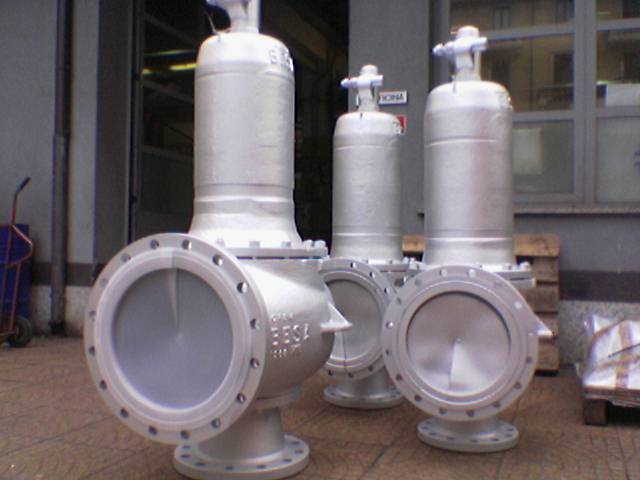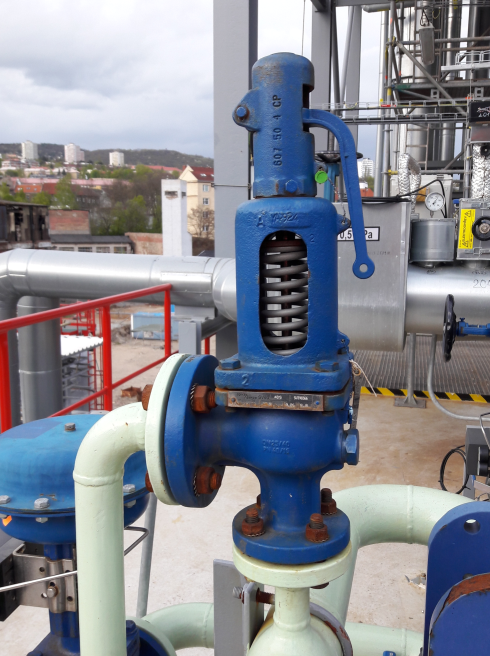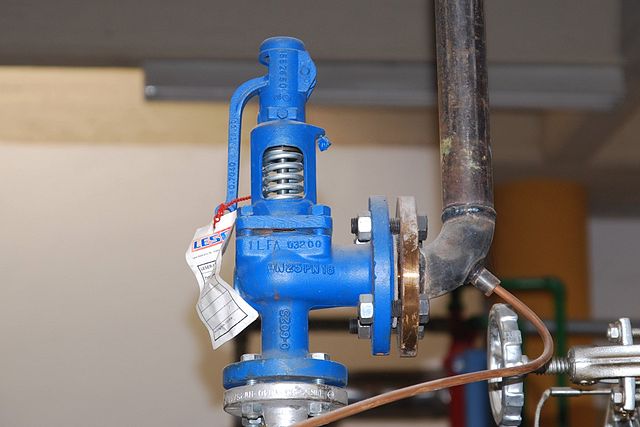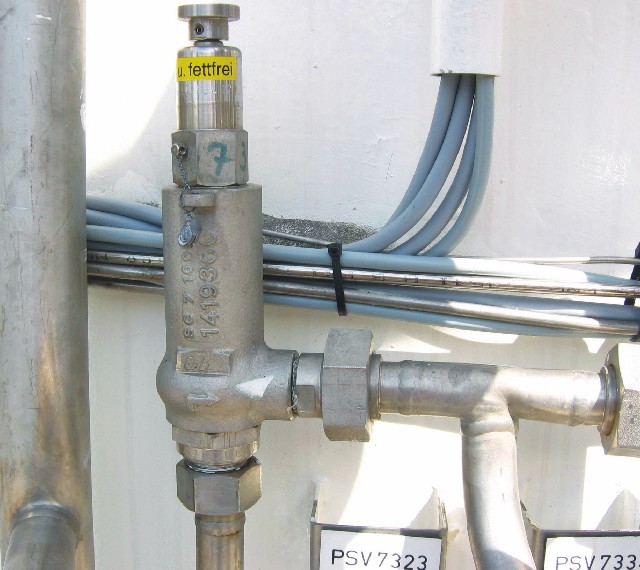In this article from Linquip, we want to talk about the difference between safety valve and relief valve. These two valves are among popular valves that are sometimes mistaken for each other. Although they both function for the same purpose, they have certain differences which we will cover in this article. Both safety valves and relief valves prevent the accumulation of excess pressure but they differ in operation. They both try to prevent reaching the pre-defined limit that has been set for the system but in two different ways. But after all, they both protect the system. Now, let’s see what these differences are.
Definition
The first difference between safety valve and relief valve is in their definition. The relief valve is also known as the pressure relief valve. This safety device is usually used for maintaining proper preset pressure in the system within a certain limit condition. This limit is to prevent over-pressure because the relief valve releases excessive pressure from the system which controls the level of pressure within that system.
Safety valves are used for protection in systems for controlling the pressure under a predetermined pressure limit. They release the excess gas or liquid when the pressure reaches the limit. If the pressure is not controlled and the excess gas or liquid is not released in time, the vessel can be damaged.
Function
Another difference between safety valve and relief valve is in function. Pressure relief valves are usually used in a hydraulic system. They control the pressure with a certain limit. With the increase in pressure, the valve lifts up to release the excess pressure. This pressure escapes through an alternate channel or a bypass in the system and goes to the source (or the input channel). They may also leave from another route that receives the excess liquid.
Safety valves, on the other hand, provide safety to the property and the environment. This safety is needed because of the damages that excess pressure may cause. When the pressure in the system increases above the limit, the safety valve opens up.
Set Point
The third difference between safety valve and relief valve is in the set point. The set point is the point that the pressure is set to. This is the lowest maximum pressure rating and the system is allowed to operate below this level. The system can work below this point without any damages. When the pressure goes above the set point, the relief valve starts to open. On safety valves, on the other hand, the pressure is pre-determined based on the materials of the system and the operation of the system.
Read More on Linquip
- globe valve vs ball valve; Which One Is the Best for You?
- Difference between gate valve and globe valve
Overall comparison between safety valve and relief valve
In general, the pressure of the relief valve is set to control and maintain the pressure in the system and this set point depends on the working pressure of the system that uses the valve. Pressure safety valves, on the other hand, are designed based on multiple factors such as the environment that the valve should work in, the material used, and the work it has to do. The set point for the pressure safety valve has been set to a point that prevents the device from getting damaged.
Now that we know their difference, it would be good to quickly review what they actually are:
What is a relief valve?
Relief valves are also known as pressure relief valves. They are among protective devices that have been designed to protect the pressurized working systems and equipment from multiple damages caused by over-pressure. These valves open at the pre-set pressure set point to prevent the system from failure due to overpressure. The set point, as mentioned above, is the pressure under which the system works efficiently. When the pressure reaches this point, the valve opens up and releases the extra pressure.
What is a safety valve?
Safety valves are fail-safe devices that prevent malfunctioning and failure. They release the pressure when the pressure inside the system exceeds the set point and prevents failure. When the pressure goes above the limit, the safety valve automatically opens and releases the pressure. They release the excess pressure to prevent any damages to the vessel and they ensure the pressure remains within the set point. Safety valves have been designed to protect the system, as well as the environment around the system.
Conclusion
So, the safety valve directly opens the lift at the set pressure. It has been designed to open automatically when the pressure exceeds the predefined set point. It is able to open manually via an easing gear. The set pressure for the safety valve is less than 3 percent above the working pressure. Safety valves open immediately and fully to prevent overpressure conditions. Don’t forget that safety valves have been designed to safeguard people, the environment, and property and they operate without human interventions. They have different types that are based on their performance and applications.
The relief valve’s opening is proportional to the increase in the vessel’s pressure. The relief valve has been designed to limit the pressure inside a system within a certain set point or specific limit. The set point for the relief valve is 10 percent above the working pressure. An operator must usually operate with this valve when the pressure reaches the specific limit to open the valve. Relief valves have different categories including direct-operated, pop-type, pilot-operated, and internal relief valves.
That was all there is to know about the difference between safety valve and relief valve. What do you think about these two valve types? Which one do you think is more common and can prevent damages to the system better? Comment below and share your thoughts with us. And if you have any questions, don’t forget to signup on Linquip to talk to our experts. We will answer your questions right away.
Read More on Linquip
- Safety & Relief Valve Manufacturers
- Control Valve Manufacturers
- Ball Valve Manufacturers
- Butterfly Valve Manufacturers
- Valve Manufacturers
Buy Equipment or Ask for a Service
By using Linquip RFQ Service, you can expect to receive quotations from various suppliers across multiple industries and regions.
Click Here to Request a Quotation From Suppliers and Service Providers






